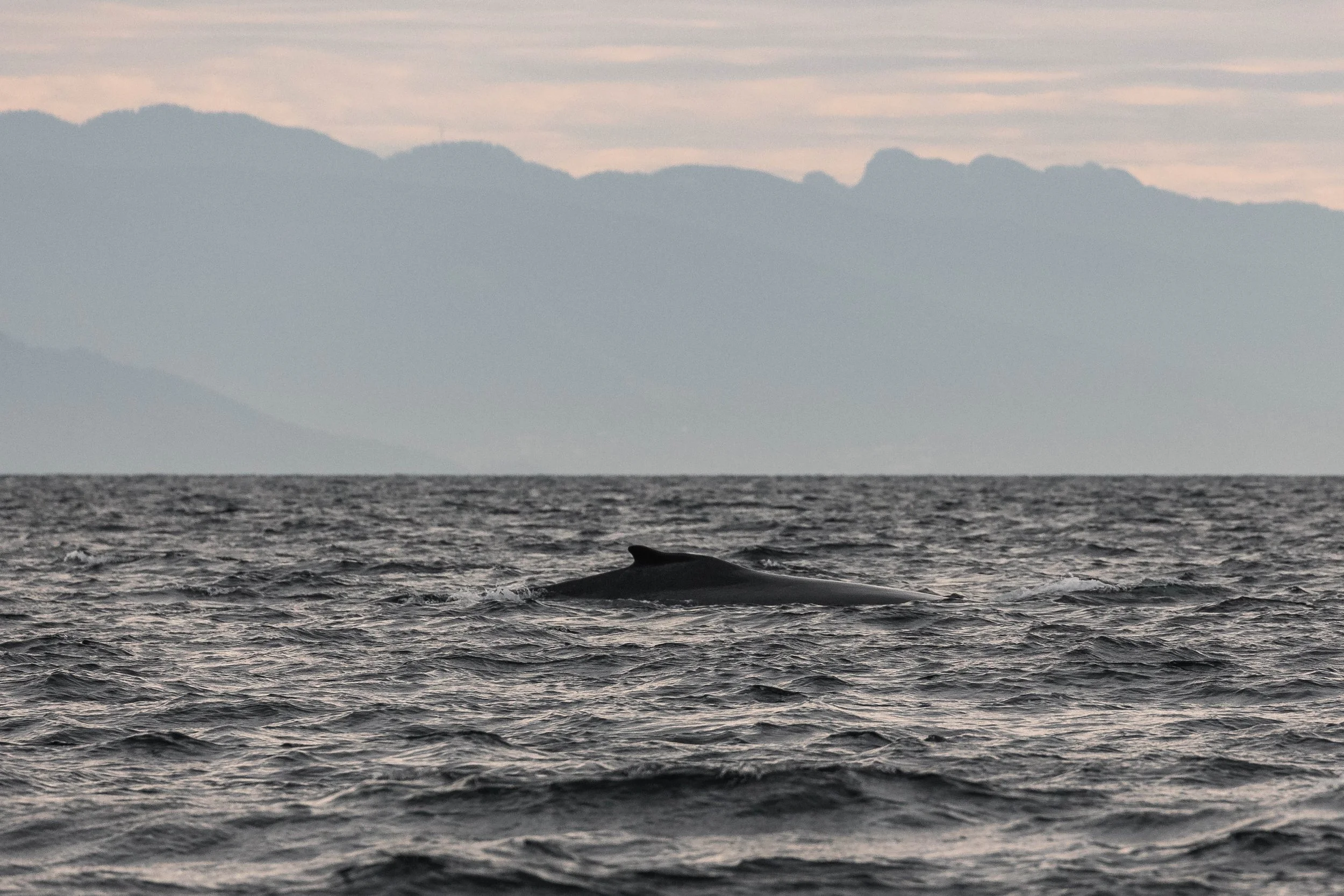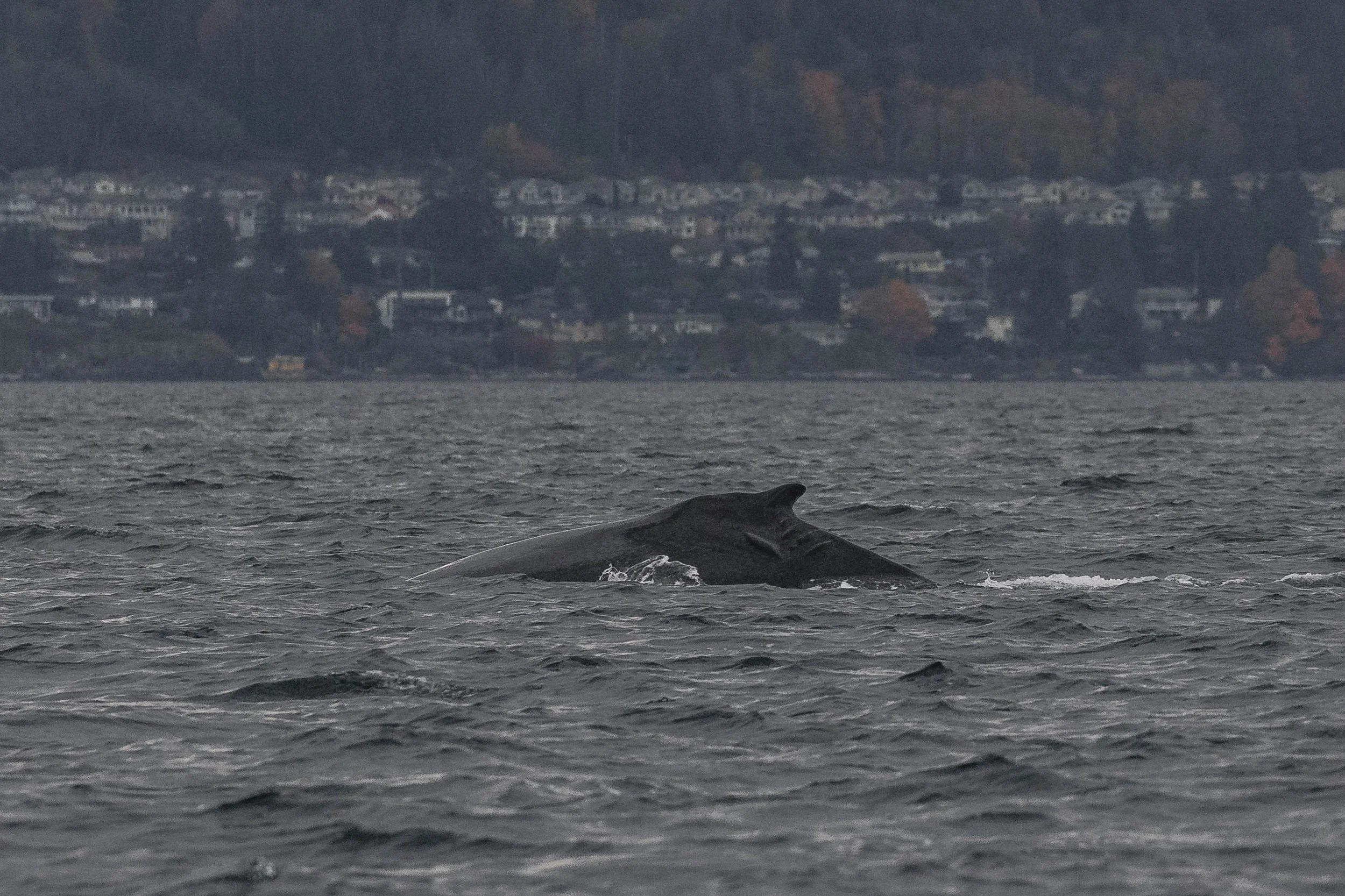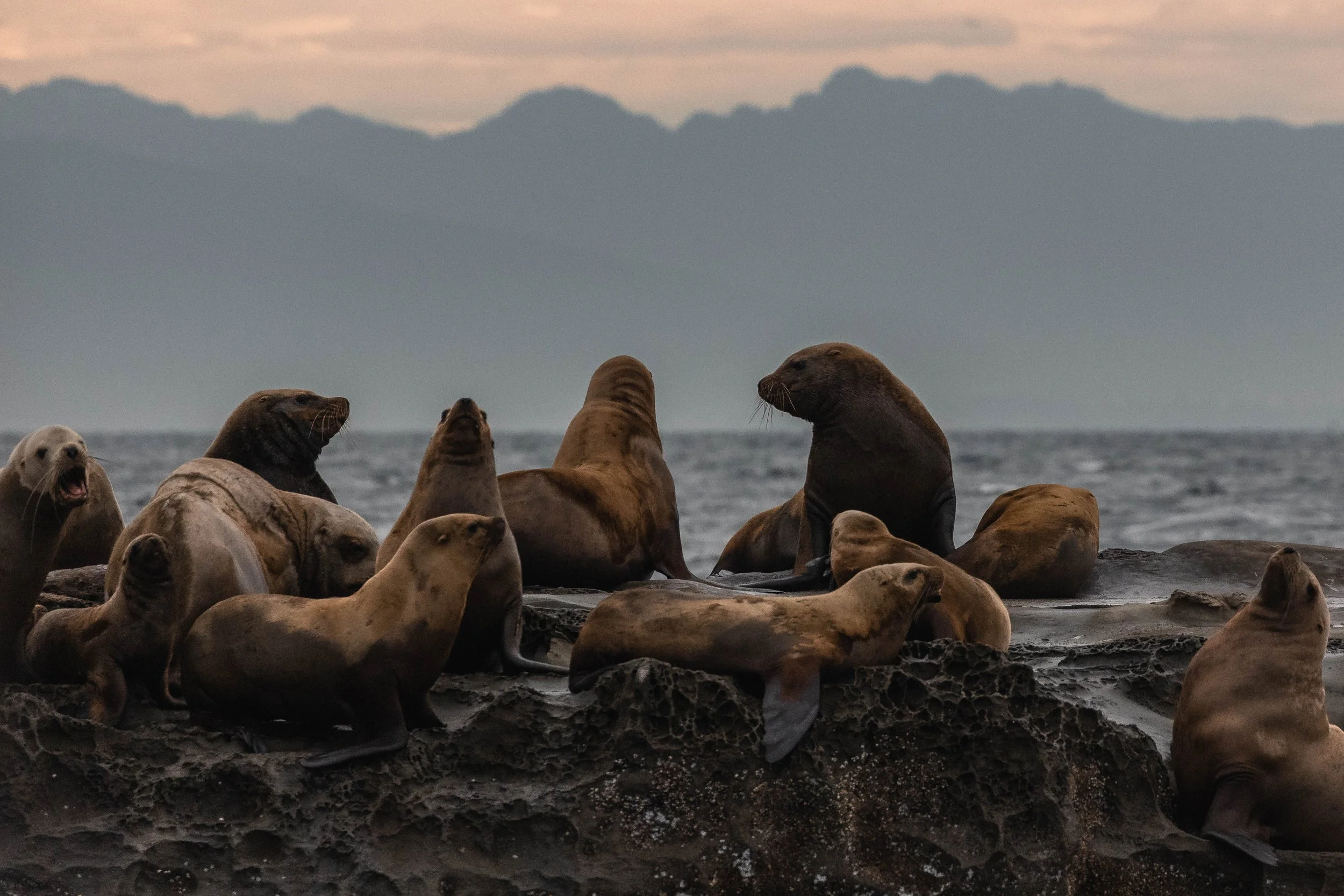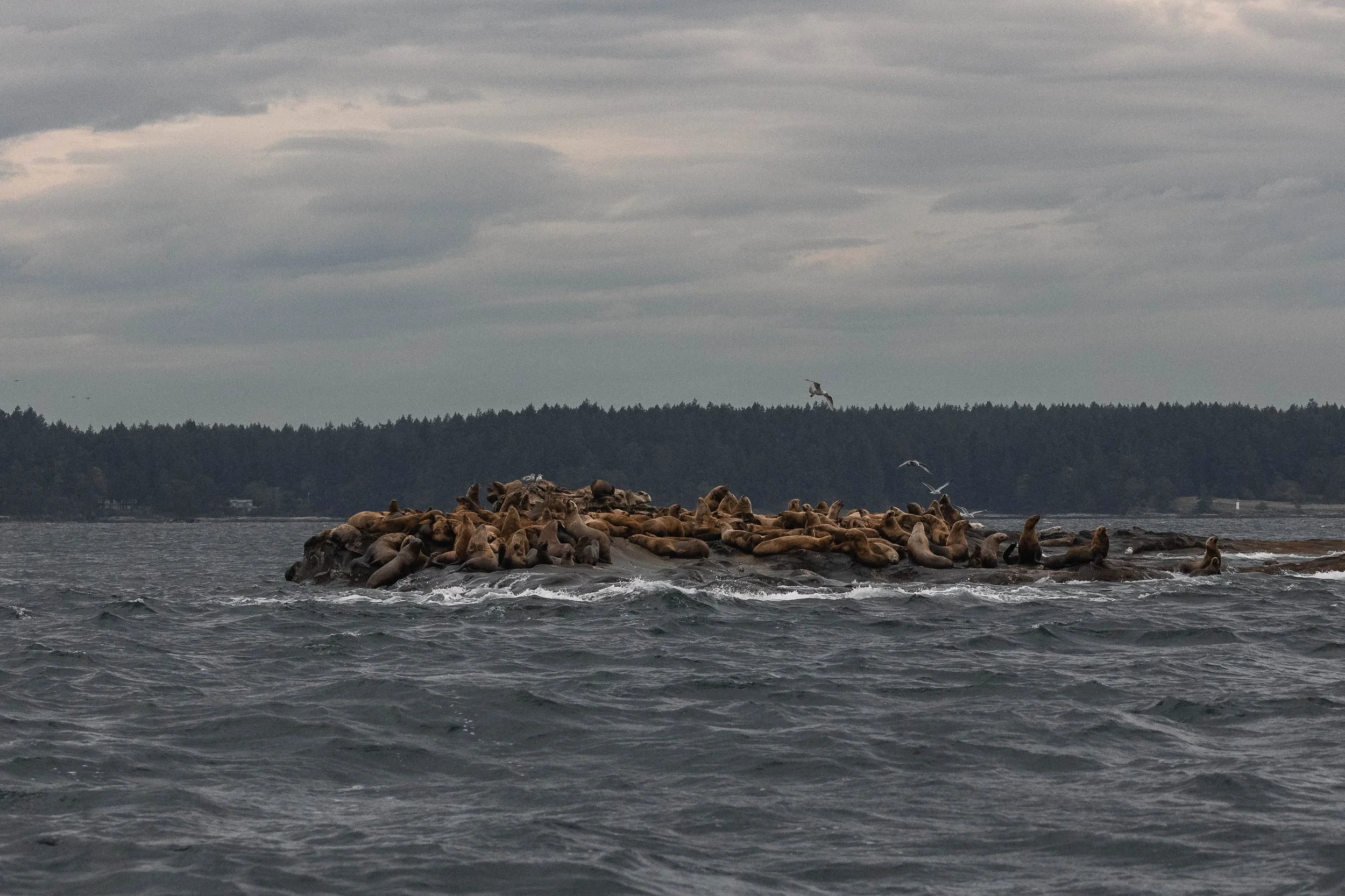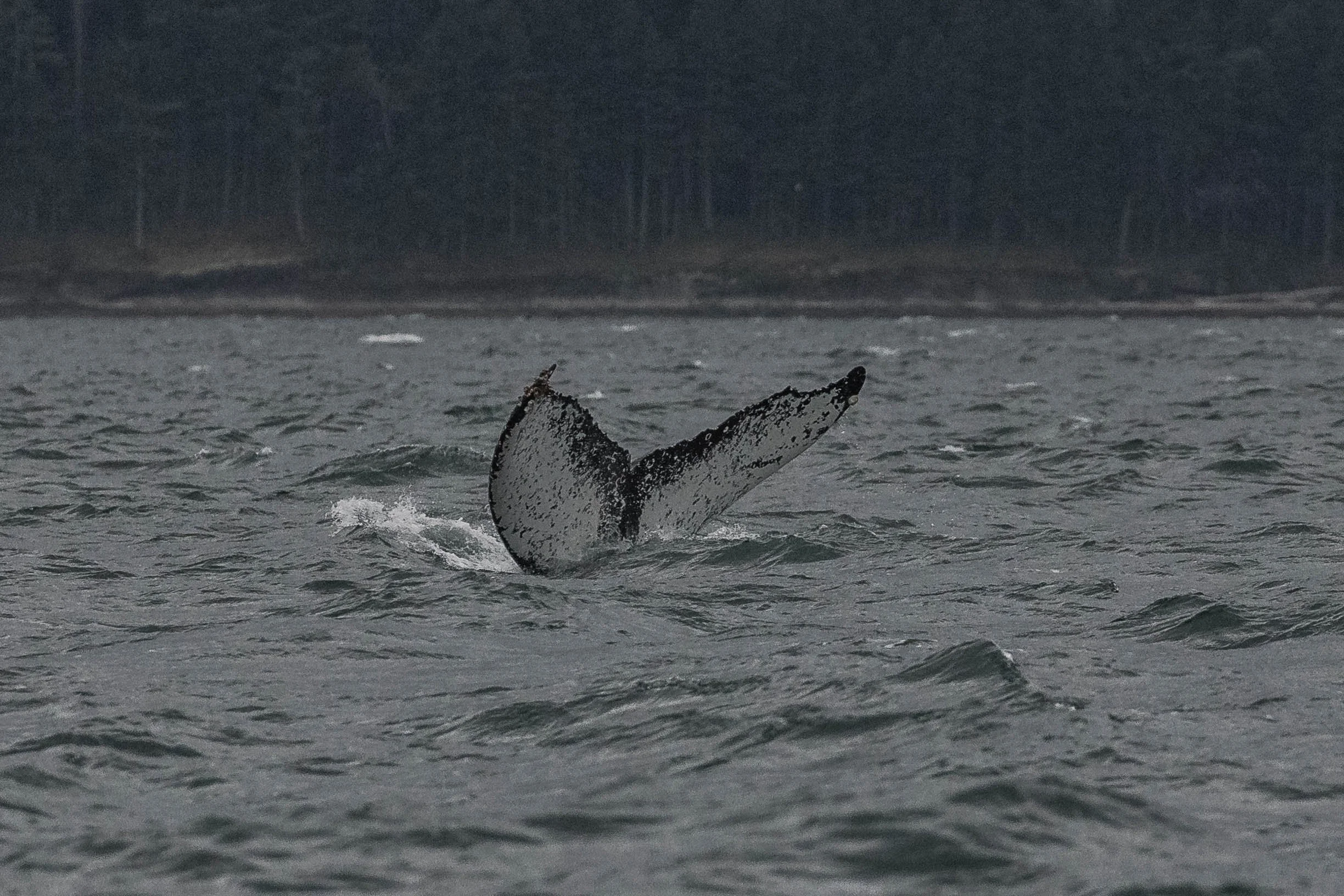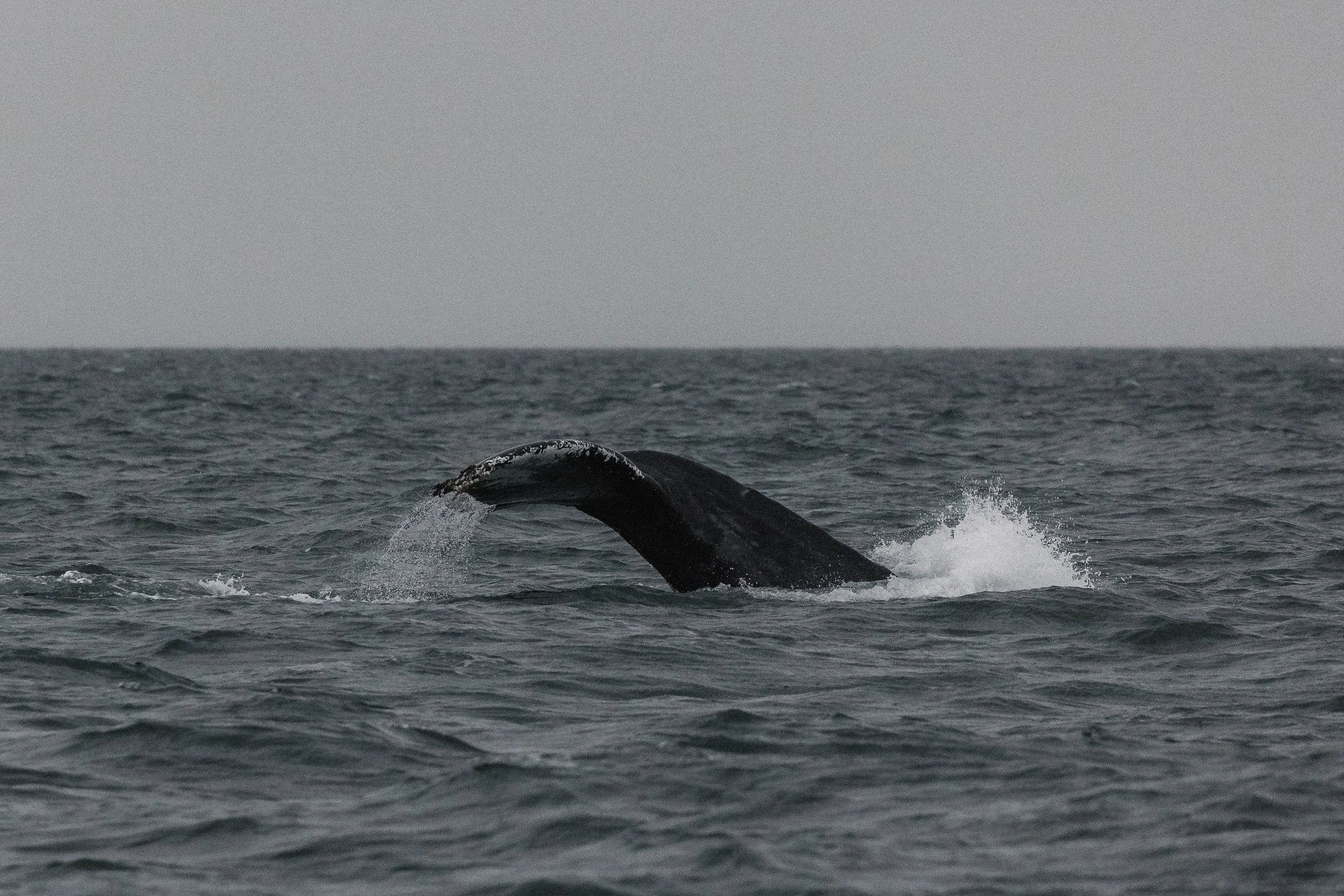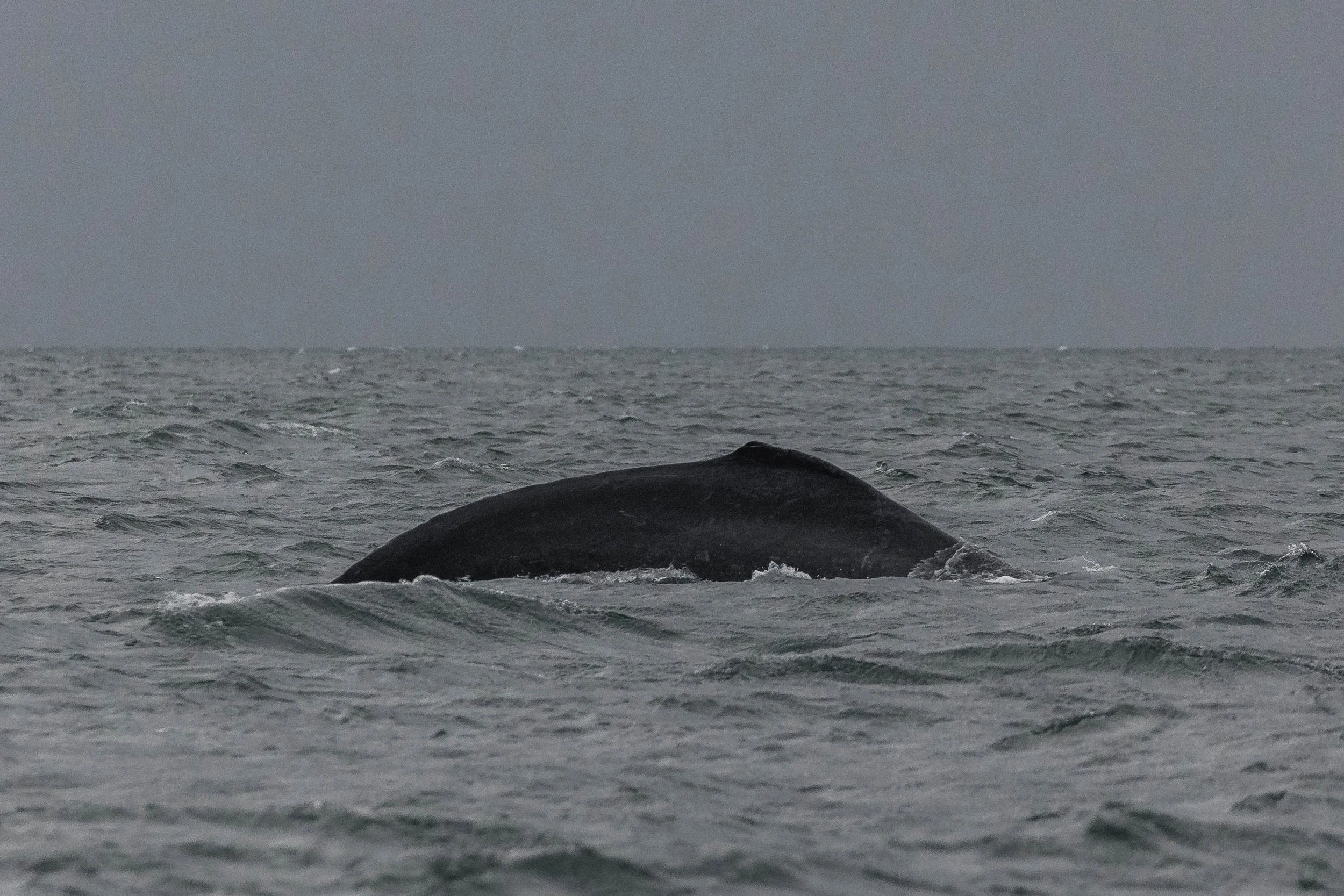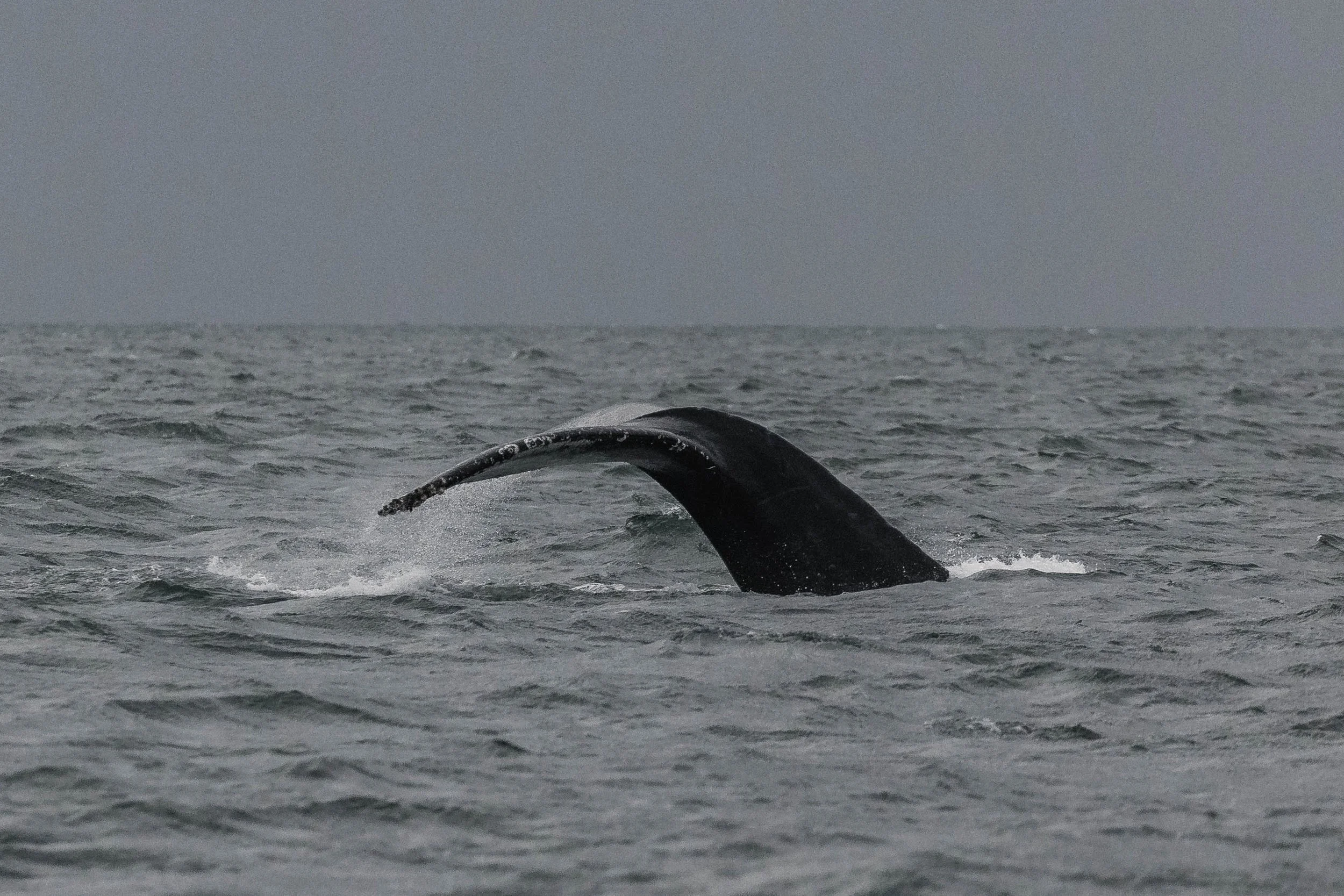October 22, 2025 - Humpbacks all over the Strait!
Just Kula was out on the water today, embracing a proper West Coast mix of weather, a little wind, a little rain, and even a few golden peeks of sunlight filtering through the clouds. We decided to begin our search in the Strait, and that choice paid off almost immediately. Just outside the harbour, we spotted some serious splashing in the distance, a clear sign of activity against the dark backdrop of stormy skies.
Through the grey, whitewater flew up again and again as a whale’s chin slapped the surface in a powerful display. Then, in one breathtaking moment, the whale hurled its entire body out of the water, a complete breach! Moments like that never fail to leave us in awe. As we slowly approached, the activity quieted down, and our energetic whale seemed ready for a well-earned rest.
Breaching and other acrobatic displays are incredible to witness, but they take immense energy for a humpback whale. Each lift of that 40-tonne body out of the water can burn thousands of calories. These movements are thought to serve multiple purposes, from communication and play to removing parasites or asserting dominance, but they’re also reminders of just how powerful these whales truly are.
With migration season quickly approaching, humpbacks like this one are working hard to bulk up before making the long journey south to their warm breeding grounds near Mexico and Hawaii. These whales don’t eat while they’re away, relying entirely on the fat reserves, or blubber, built up here in the rich feeding waters of the Salish Sea.
Even before we caught a glimpse of her tail, we knew exactly who we were with today. This whale bore distinctive scarring along her side, the result of a past propeller injury, unmistakably Mammoth/Ocean (BCX1710). She’s a well-known visitor to our area and a resilient reminder of the challenges whales face as they share coastal waters with humans. After a few peaceful moments watching her rest, we decided to continue our search and see who else might be nearby.
Heading further into the Strait meant more wind and more waves, and our crew had to keep a sharp eye on the horizon. Choppy conditions can make spotting blows tricky; spray from waves or reefs can often trick even experienced eyes. We were just about to pass by the Gabriola Reefs, thinking we were chasing sea spray, when we caught sight of something darker moving beneath the mist, a blow! Then another, and another still. We had found a trio of humpbacks!
These whales were consistently lifting their tails, making identification easy despite the rolling waves. Our sightings confirmed Jackson (BCY1025), Slalom (BCZ0437), and Aerie (BCY0983).
It appeared that they were engaging in lunge feeding, one of the most dramatic feeding methods in the animal kingdom. During a lunge, a humpback propels itself forward at high speed with its mouth wide open, engulfing a massive volume of water teeming with small fish or krill. As it closes its mouth, the whale uses its baleen plates, long, comb-like structures made of keratin, to filter out water and trap its prey. This technique requires precision and an enormous amount of energy, but it’s also remarkably effective in densely packed areas where food is abundant.
As we spent time observing these three, the drizzle turned into a proper downpour. We decided to seek some shelter and made our way toward the calmer waters of the Gulf Islands. Before heading through Gabriola Passage, we made a quick stop at a local favourite known affectionately as Stinky Rocks, where we usually find a raucous colony of Steller Sea Lions.
True to form, the sea lions were putting on a show of their own, bellowing loudly, jostling for the best resting spots, and occasionally giving each other a not-so-gentle shove. Just around the corner, their smaller, quieter cousins, harbour seals, lounged serenely on the nearby rocks, seemingly unbothered by all the commotion.
With the rain now falling steadily and the light beginning to fade, we made our way back through Dodd Narrows, where swirling currents and forested shores framed our return. As Kula pulled back into the dock, guests and crew alike were damp but smiling, the mark of a truly West Coast adventure.
Days like this remind us that even in the rain and wind, the Salish Sea is alive with energy, resilience, and wonder, and we’re always grateful for the chance to experience it.
Photos below taken by Vanessa Vereschahen.
Mammoth/Ocean surfacing in the waves.
You can see Mammoth/Ocean’s scarring on this side of her dorsal surface.
The underside of Mammoth/Ocean’s tail as she dives.
Harbour Seals on Stinky Rocks.
Steller Sea Lions lounging on the Sandstone.
Steller Sea Lions posing on the rocks with the Coastal Mountains behind them.
Steller Sea Lions on Stinky Rocks.
Jackson creating a fluke waterfall as she dives.
The underside of Jackson’s fluke is so beautiful!
Jackson’s dorsal fin as she surfaces.
A gull flying overhead.
Aerie going for a dive.
Aerie creating a fluke waterfall as they dive.
Jackson going for a dive in the waves.
Slalom arching for a dive.
Slalom creating a fluke waterfall to dive.

